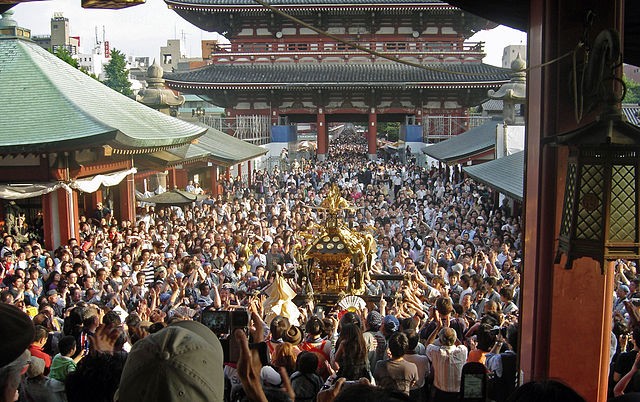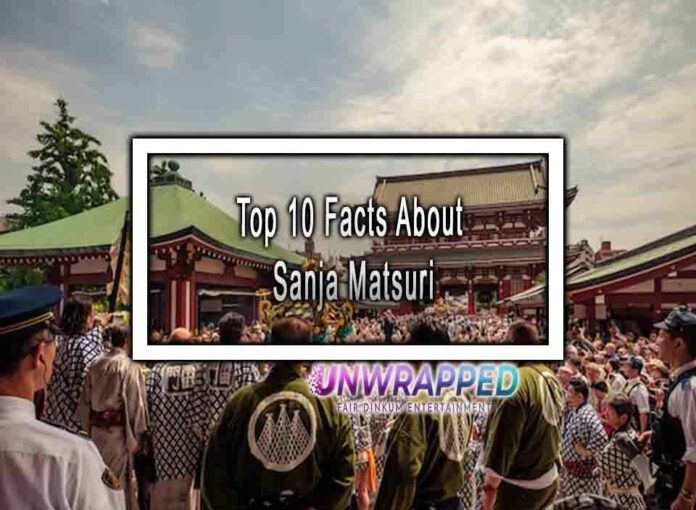The Sanja Matsuri, also known as the Sanja Festival, is one of Tokyo’s most famous Shinto festivals, celebrated in the Asakusa district of Taito ward. This vibrant and dynamic festival honors the three founders of Senso-ji Temple. Here are the top 10 facts about the Sanja Matsuri:
Historical Roots:
The Sanja Matsuri has a history dating back over 700 years, making it one of Tokyo’s oldest and most revered festivals.
Three Shrine Deities:
The festival is dedicated to the three deities of Senso-ji Temple: Jinja Shin, Tanji Shin, and Hikawa Shin. They are represented by three large mikoshi (portable shrines) that are paraded through the streets.
Date and Duration:
The festival typically takes place on the third weekend of May. It spans three days, with the main procession occurring on the middle day.
Mikoshi Procession:
The highlight of the Sanja Matsuri is the mikoshi procession, where participants carry massive mikoshi shrines through the streets of Asakusa. This strenuous and energetic activity is a testament to the festival’s vitality.
Yakuza Involvement:
Historically, the Sanja Matsuri has had connections to yakuza (Japanese organized crime groups), who played a role in funding and organizing the event. In recent years, efforts have been made to reduce their influence.
Colorful Costumes:
Dancers and participants wear vibrant and traditional Edo-period clothing, including colorful kimono, happi coats, and straw sandals, contributing to the festival’s festive atmosphere.
Raucous and Spirited:
Sanja Matsuri is known for its energetic and spirited atmosphere. Dancers and mikoshi carriers often engage in playful banter and lively performances.
Street Food and Stalls:
Festival-goers can enjoy a wide array of Japanese street food, snacks, and local specialties from the food stalls and vendors that line the festival streets.
Art and Entertainment:
In addition to the mikoshi procession, the festival often features traditional Japanese arts and entertainment, including music, dance, and theatrical performances.
Religious Significance:
While the festival is a lively and boisterous event, it holds deep religious significance for the people of Asakusa and is an opportunity to show reverence to the temple’s deities.
The Sanja Matsuri is a unique blend of history, culture, tradition, and vibrant celebration. It offers a captivating glimpse into Tokyo’s rich heritage and serves as a testament to the enduring spirit and vitality of Japanese festivals.










